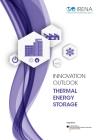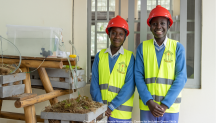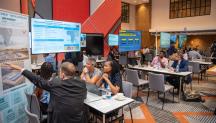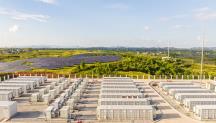

-
-
IRENA (2020), Innovation Outlook: Thermal Energy Storage, International Renewable Energy Agency, Abu Dhabi.
Copied
/-/media/Files/IRENA/Agency/Publication/2020/Nov/IRENA_Innovation_Outlook_TES_2020.pdf
Copied
Innovation outlook: Thermal energy storage
Newsletter
Transforming the global energy system in line with global climate and sustainability goals calls for rapid uptake of renewables for all kinds of energy use. Thermal energy storage (TES) can help to integrate high shares of renewable energy in power generation, industry and buildings.
The report is also available in Chinese (中文).
This outlook from the International Renewable Energy Agency (IRENA) highlights key attributes of TES technologies and identifies priorities for ongoing research and development.
Among other findings:
- TES technologies offer unique benefits, such as helping to decouple heating and cooling demand from immediate power generation and supply availability. The resulting flexibility allows far greater reliance on variable renewable sources, such as solar and wind power. TES reduces the need for costly grid reinforcements, helps to balance seasonal demand and supports the shift to a predominantly renewable-based energy system.
- The global market for TES could triple in size by 2030, growing from gigawatt-hours (GWh) of installed capacity in 2019 to over 800 GWh within a decade. Investments in TES applications for cooling and power could reach between USD 13 billion and USD 28 billion in the same period. As part of a broad shift to renewables, efficiency and greater electrification, TES investments can help to fulfil long-term climate and sustainability goals.
- Molten-salt storage – a form of TES commonly used in concentrated solar power (CSP) plants could grow from 491 GWh of installed capacity currently to 631 GWh by 2030. In the meantime, other TES technologies, including solid-state and liquid air variants, could also become commercially viable for storing surplus energy from CSP, solar photovoltaics (PV) and wind.
- TES use in district heating and cooling effectively decouples demand from supply, allowing energy to be stored on a seasonal basis. District heating already incorporates sensible heat technologies such as tank TES (or TTES) and underground TES (or UTES). Water tank TES (or WTTES), already widely used in buildings, is also coming into increasing use for solar thermal plants in the mining, food and textile industries.
- Investments to drive technological development and measures to enhance market pull, combined with a holistic energy policy aimed at scaling up renewables and decarbonising energy use, can unlock rapid growth in TES deployment.
In addition, TES forms a key part of the energy transition investment package available to countries for post-COVID recovery. Investments in TES, along with renewables, energy efficiency and electrification, can strengthen health and economic infrastructure, drive short-term recovery and align energy development with global climate and sustainability goals.
IRENA's Innovation Outlook series analyses rapidly emerging renewable energy technologies (RETs) and examines ways to enhance their competitiveness. Each outlook identifies technology-, industry- and policy-related challenges and assesses the potential breakthroughs needed to accelerate the uptake.




